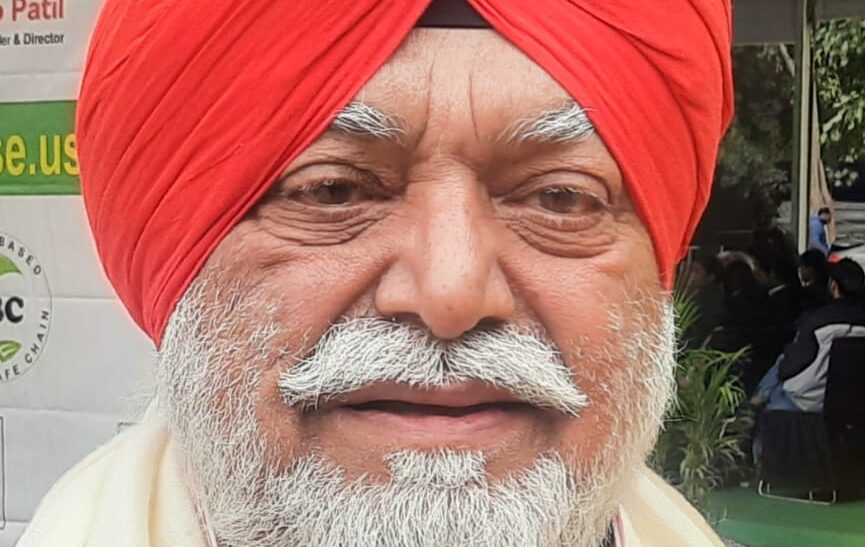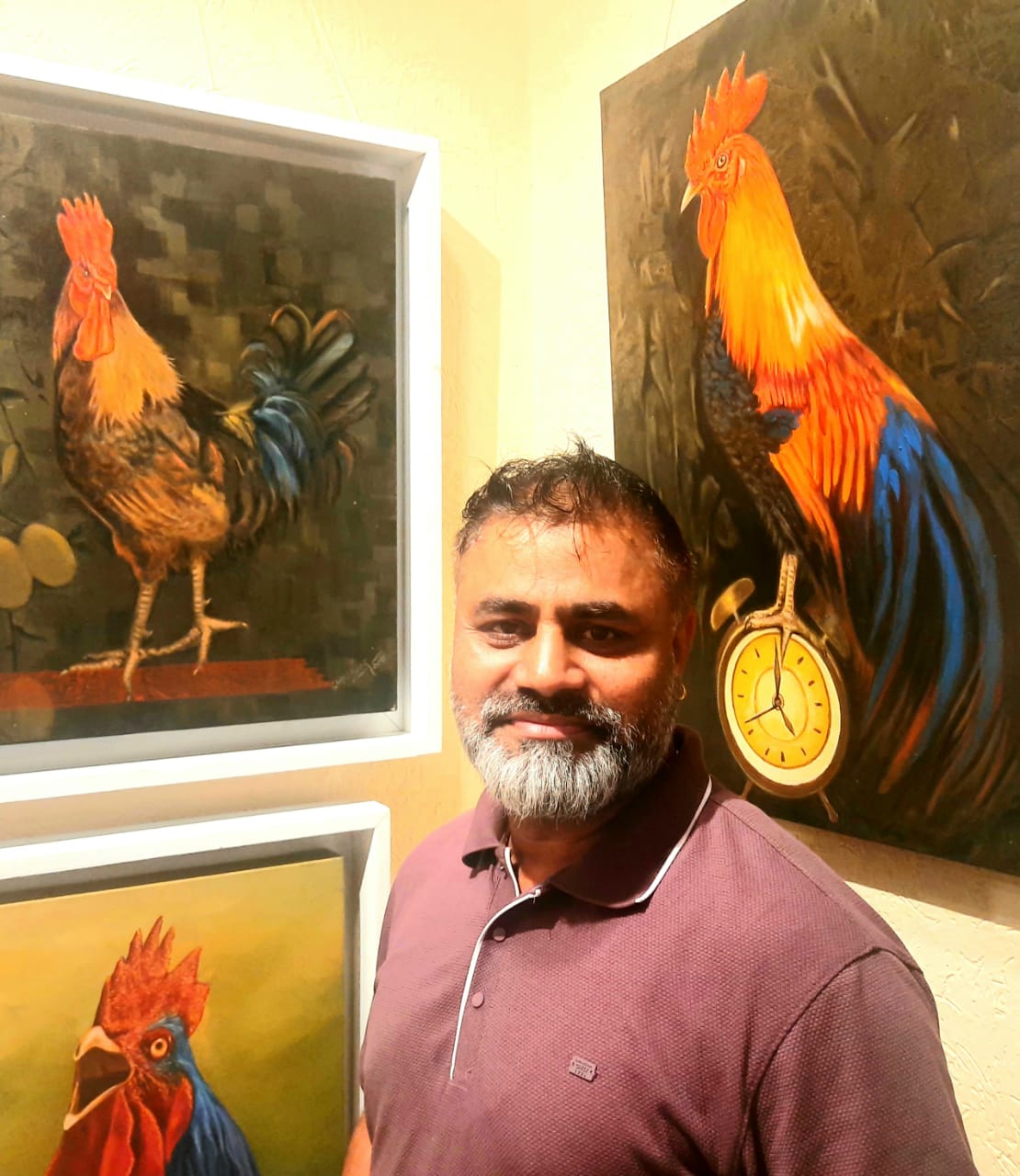Renowned as a culinary virtuoso, Dr. Chef Manjit Singh Gill, President of Indian Federation of Culinary Associations (IFCA) and Managing Director of Ecogreen Hospitality, stands as a luminary in the realms of gastronomy, with a name resonating both nationally and globally in the hospitality and culinary industry. Boasting a career spanning four decades, Chef Gill’s prowess emanates from his role as the former Corporate Chef of ITC Hotels. His culinary journey has been a tapestry of innovation, particularly in the realm of traditional Indian cuisine, where he curated world-class restaurants that became iconic landmarks.
Having left an indelible mark with concept restaurants like Bukhara, renowned for its north-west frontier tandoori cuisine, Dum Pukht showcasing the grand cuisine from Avadh, Dakshin specializing in the culinary diversity of the four southern states of India, and Kabab & Kurry offering the best of pan-Indian kebabs and curry dishes, Chef Gill has consistently pushed the boundaries of gastronomic excellence. His most recent endeavor, Royal Vega, stands as a testament to his commitment to ‘honestly’ vegetarian cuisine based on the principles of Indian gastronomy (Ayurveda) and served in regal style.
Chef Manjit Gill’s culinary influence extends beyond the kitchen, as he has had the honor of serving former American Presidents such as Barack Obama, Bill Clinton, George Bush, as well as various global leaders at state banquets hosted at ITC properties. His international footprint includes the creation of the acclaimed Bukhara Pop Up events in London (2012) and Singapore (2015 and 2016), garnering attention from both the international press and discerning guests.
In addition to his culinary feats, Chef Gill has made significant contributions to the culinary community. He founded the first national chefs’ forum in Delhi in 1984, later consolidating regional forums into the Indian Federation of Culinary Associations (IFCA), recognized by the Ministry of Tourism. Under his leadership, India secured membership in the World Association of Chefs Societies (WACS) in 2004, and Chef Gill currently serves as the Chairman of the WorldChefs Committee on Cultural Heritage and Ethnic Cuisine.
Chef Gill’s literary contributions include books such as ‘Eating Wisely & Well,’ ‘Indian Spa Cuisine,’ and ‘Fire/Water/Earth/Air/Ether – Secrets of Indian Gastronomy.’ His televised culinary endeavors began in 1982 with the first TV show on Indian food, making culinary art accessible to households across India.
Accolades have poured in for Chef Gill, including the prestigious Lifetime Achievement Award from the Ministry of Tourism in 2007. Notably, he is the first Indian to receive an honorary membership from WorldChefs, and he currently presides over the WorldChefs Committee on Cultural Heritage and Ethnic Cuisine.
Chef Manjit Gill’s commitment to promoting Indian cuisine globally is exemplified by his involvement in various international events, including the World Tour of Chefs against Hunger and the promotion of Slow Food principles. As a tireless advocate for food safety, he has collaborated with the Food Safety & Standards Authority of India (FSSAI), organizing workshops to train chefs and food handlers on food safety laws, hygiene, and sanitation.
In his unwavering mission to make India a culinary superpower, Chef Gill continues to mentor chefs and instill the values of wellness and sustainability in the culinary arts. His relentless efforts have not only brought pride to Indian cuisine but also positioned India as a formidable contender on the global gastronomic stage. Chef Manjit Gill’s vision extends beyond the kitchen, aiming to cultivate a legacy that enriches society through the art and philosophy of culinary excellence.
During a unique conversation with The Interview World, Dr. Chef Manjit Singh Gill shares valuable insights into how his organizations are providing enhanced solutions to the food and hospitality industry. Additionally, he emphasizes the importance of consuming millet with care. Now, let’s delve into the key highlights from his enlightening interview.
Q: How would you describe the consultancy services your organization offers and what specific areas or industries do you specialize in?
A: We specialize in providing comprehensive solutions for the food industry, encompassing restaurants and hotels. Our services extend from developing recipes to training staff, ensuring a seamless and efficient food operation. Another facet of our work involves catering to the demands of food processing companies. These companies approach us to assist in creating new products, and to do so, a standard recipe is imperative.
In essence, we emphasize the importance of having a foundational recipe to initiate the product creation process. Without a well-defined recipe, the production process would be hindered. Once the standard recipe is established, we assist in scaling up production and provide culinary solutions to ensure the correct and optimal execution of the product. This holistic approach sets the foundation for successful outcomes.
Within our organization, we boast an innovation center and a fully equipped kitchen at our office. This enables us to conduct daily cooking trials, allowing us to continuously innovate and refine our culinary offerings. We take pride in our commitment to excellence, ensuring that every step of the food production process is meticulously executed for the best results.
Q: Do you offer consultancy services specifically tailored for food startups?
A: One noteworthy startup focused on Ayurvedic drinks sought our assistance, and we generously shared our recipe with them. Throughout our professional journey, we’ve collaborated with numerous companies, including a notable partnership with Burger King. The fast-food giant, desiring innovative chickpea-based burgers, approached us for our expertise, and we delivered a tailor-made recipe to meet their requirements. Our experience extends to multiple companies where we’ve successfully offered distinctive food solutions to cater to their specific needs.
Q: What strategies and initiatives are you implementing to contribute significant value to the Indian food market?
A: To begin with, it’s essential to delve into the intricacies of Indian food. This is the primary emphasis of my request to the Ayurvedic community. The challenge lies in their failure to convey the essence of their cuisine in a simple language accessible to the general populace, creating a noticeable communication gap.
In our pursuit to bridge this gap, I am actively engaging in courses to comprehend the intricacies of Ayurveda. It’s crucial to recognize that consuming food in courses, a practice prevalent in the Western world, is not aligned with traditional Indian eating habits. This approach lacks a scientific foundation and originated from a chef’s initiative, gaining widespread adoption without due consideration.
The imperative now is to break away from blindly adopting Western dietary norms. Instead, we need to delve into comprehensive research about our own food practices. It prompts reflection on whether the responsibility lies with Ayurvedic practitioners or the Ministry of AYUSH to enlighten the public.
Beyond the mere dissemination of scientific concepts and ancient shlokas, there is a pressing need to effectively communicate this knowledge to the younger generation. The current challenge lies in the gap between imparting wisdom and ensuring its assimilation by children.
Q: What role do you believe the millet movement plays in contributing to a course correction, and how can its influence be harnessed effectively?
A: Millet holds significant nutritional value and merits consideration as a primary cereal in our diets. However, it’s essential to approach its incorporation thoughtfully. Millet, being a high-fiber grain, requires a gradual introduction to allow the body to adapt. Over the past few decades, our diets have predominantly featured refined foods, which are notably low in fiber.
Transitioning abruptly to a fiber-rich diet, like one centered on millet, can overwhelm the digestive system. It’s crucial to recognize the need for education on millet consumption. Moreover, we need to understand how to incorporate it into our meals and the various cooking methods involved.
Millets, as indigenous staple crops, boast superior nutritional profiles, rich in proteins, vitamins, and minerals. Despite these benefits, the presence of anti-nutrients like phytic acid, tannins, and polyphenols poses a challenge to optimal mineral absorption, particularly iron and zinc. Unfortunately, not enough emphasis is placed on addressing these anti-nutrients.
Educational initiatives should highlight the importance of managing anti-nutrients in millets. Implementing household methods to reduce phytic acid levels is crucial for enhancing nutrient absorption. Techniques such as bran removal, soaking, germination, fermentation, and autoclaving prove effective in mitigating the impact of anti-nutrients on the overall nutritional quality of millet-based diets.










25 Comments
Great write-up, I am regular visitor of one’s site, maintain up the excellent operate, and It’s going to be a regular visitor for a lengthy time.
I like this post, enjoyed this one thankyou for posting.
Thank you for sharing superb informations. Your web site is so cool. I’m impressed by the details that you’ve on this blog. It reveals how nicely you understand this subject. Bookmarked this web page, will come back for extra articles. You, my pal, ROCK! I found just the info I already searched everywhere and simply couldn’t come across. What a perfect web-site.
Great line up. We will be linking to this great article on our site. Keep up the good writing.
Hey! I know this is kinda off topic however , I’d figured I’d ask. Would you be interested in exchanging links or maybe guest writing a blog article or vice-versa? My blog goes over a lot of the same topics as yours and I believe we could greatly benefit from each other. If you might be interested feel free to shoot me an email. I look forward to hearing from you! Fantastic blog by the way!
Today, I went to the beachfront with my children. I found a sea shell and gave it to my 4 year old daughter and said “You can hear the ocean if you put this to your ear.” She placed the shell to her ear and screamed. There was a hermit crab inside and it pinched her ear. She never wants to go back! LoL I know this is completely off topic but I had to tell someone!
I cling on to listening to the news lecture about getting boundless online grant applications so I have been looking around for the most excellent site to get one. Could you advise me please, where could i find some?
I conceive you have noted some very interesting points, appreciate it for the post.
Some times its a pain in the ass to read what website owners wrote but this website is really user friendly! .
Thank you for helping out, excellent info. “It does not do to dwell on dreams and forget to live.” by J. K. Rowling.
I do agree with all of the ideas you’ve presented in your post. They’re really convincing and will definitely work. Still, the posts are very short for beginners. Could you please extend them a little from next time? Thanks for the post.
Absolutely indited content material, Really enjoyed looking through.
Thanks for all your efforts that you have put in this. very interesting information.
excellent points altogether, you just gained a new reader. What would you recommend in regards to your post that you made a few days ago? Any positive?
Wow, marvelous weblog structure! How lengthy have you been blogging for? you made running a blog glance easy. The total look of your site is magnificent, let alone the content!
I haven’t checked in here for a while as I thought it was getting boring, but the last few posts are good quality so I guess I will add you back to my everyday bloglist. You deserve it my friend 🙂
This is the right blog for anyone who needs to find out about this topic. You notice so much its nearly exhausting to argue with you (not that I actually would want…HaHa). You positively put a brand new spin on a topic thats been written about for years. Nice stuff, simply great!
Hi there just wanted to give you a quick heads up and let you know a few of the pictures aren’t loading correctly. I’m not sure why but I think its a linking issue. I’ve tried it in two different internet browsers and both show the same outcome.
Hello.This post was extremely motivating, especially since I was looking for thoughts on this subject last couple of days.
I just could not leave your website before suggesting that I extremely loved the usual information a person supply on your visitors? Is gonna be back incessantly to check out new posts
You got a very great website, Glad I observed it through yahoo.
I truly appreciate this post. I’ve been looking everywhere for this! Thank goodness I found it on Bing. You’ve made my day! Thank you again
Good morning there, just became aware of your blog through Search engines like google, and found that it’s seriously useful. I will take pleasure in should you decide continue on this informative article.
‘Generally I don’t read article on blogs, however I wish to say that this write-up very forced me to take a look at and do so! Your writing taste has been amazed me. Thank you, very great post
“Thanks for one’s marvelous posting! I seriously enjoyed reading it, you will be a great author.I will be sure to bookmark your blog and may come back in the future. I want to encourage you continue your great job, have a nice holiday weekend!”
Comments are closed.